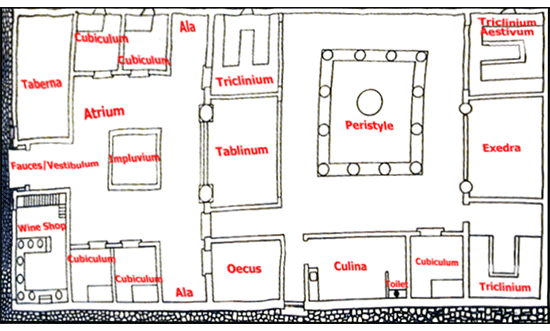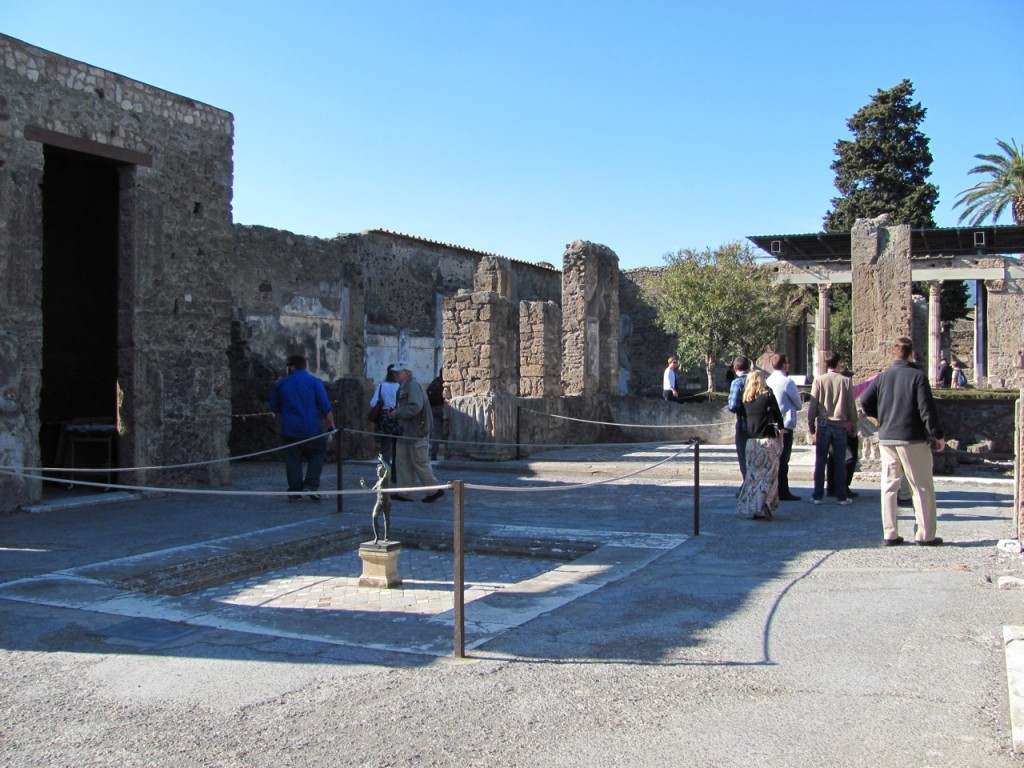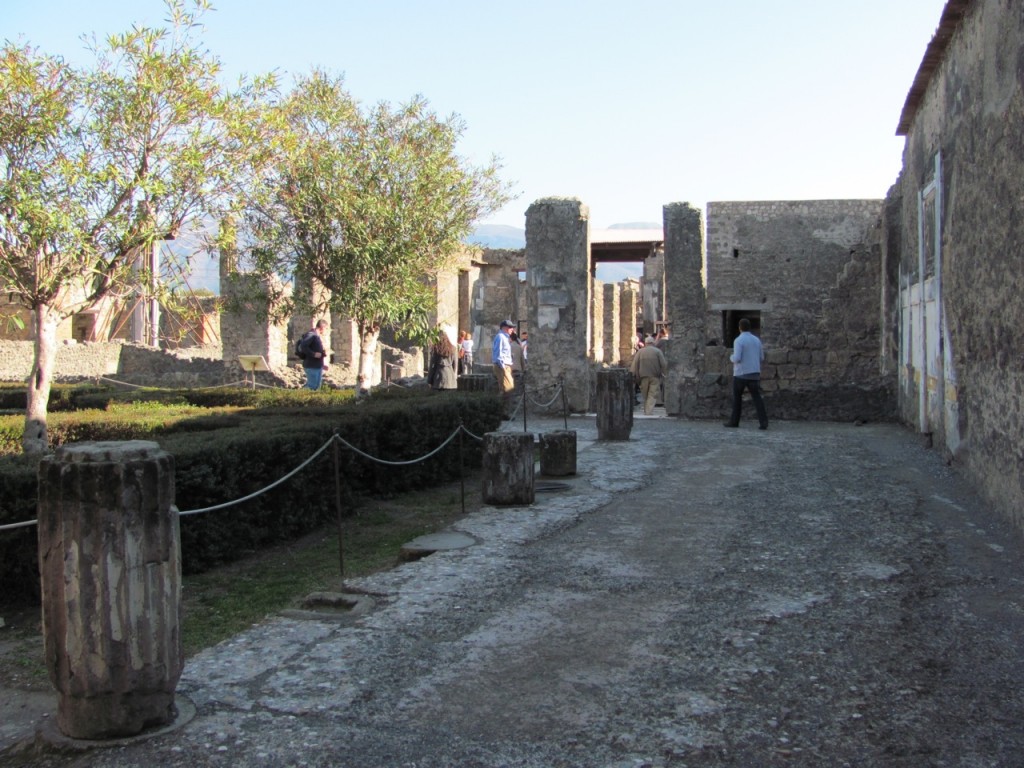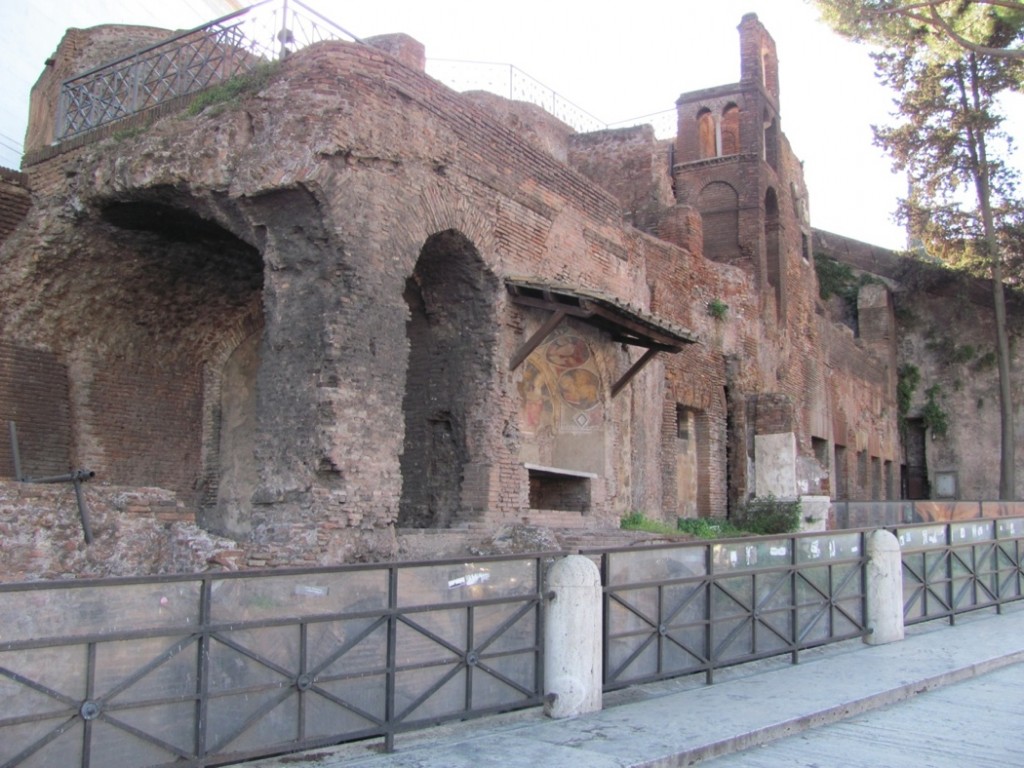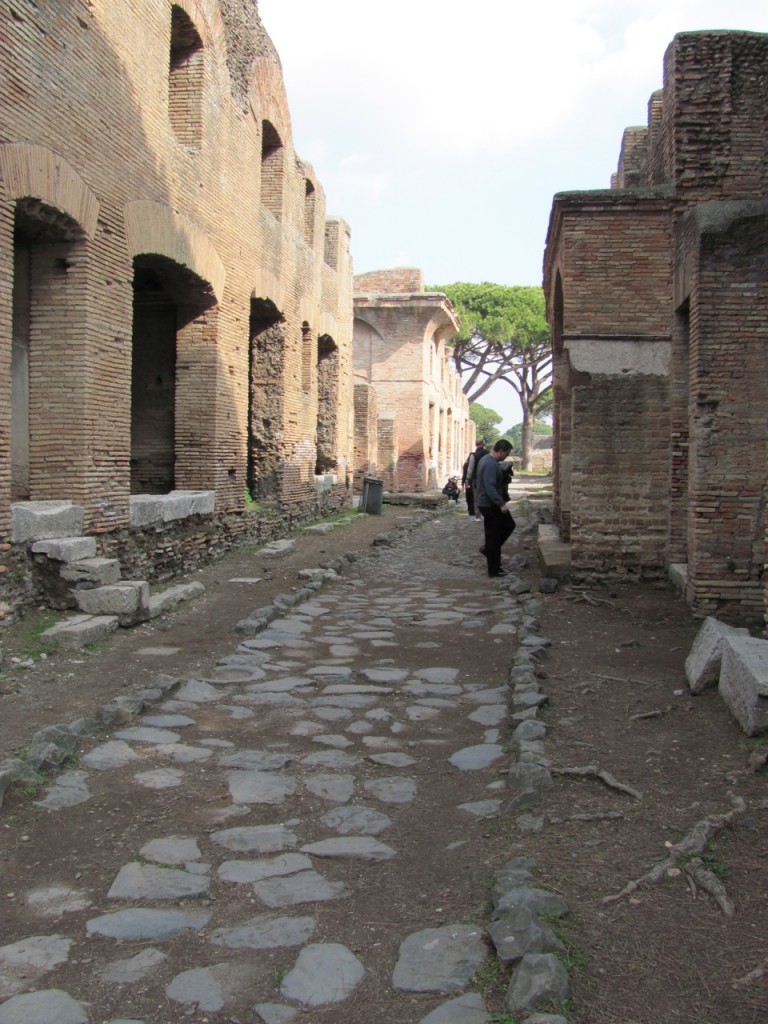Our first encounter with Romans is often a film or TV series depicting soldiers marching in armour, being tough, shouting and thrusting a sword into some barbarian in a dark, wet and enemy-infested wood. Or perhaps we think about the ruins left of magnificent imperial or public buildings?
But what about the calmer side of Roman life? Where did the civilian Romans live? The very rich and/or powerful lived in palaces or extensive town villas, but the middle-class merchants who had done well, or professional families, lived in something like this:
Model of a Roman townhouse (domus)
| Atrium | formal reception hall |
| Ala | wings/large alcoves opening from the atrium |
| Cubiculum | small room/bedroom |
| Culina | kitchen |
| Exedra | garden room |
| Impluvium | sunken part of the atrium in to catch and carry away rainwater |
| Oecus | salon/large dining room |
| Peristylium | colonnaded garden |
| Taverna | (wine) shop |
| Tablinium | office/study |
| Triclinium | dining room |
| Vestibulum | entrance hall |
This is based on a house lived in by a middle ranking Roman in Pompeii.
Most families, in more modest circumstances, lived in one or two rooms in apartment blocks of varying stability called insulae. Although kitchen and latrines could be shared, the blocks did have running water and sanitation. Rooms could be owned or rented. They were built in timber, mud brick, and later primitive concrete and supposed to be restricted in height to about 20 metres. Some rare examples survive in Rome at the foot of the Capitoline Hill and in Ostia Antica, Rome’s ancient port.
Carina and her family in 21st century Roma Nova live in a large townhouse still called a domus – Domus Mitelarum – which has an atrium with an oculus – a bull’s eye – in the roof to let in light, but no longer rainwater – it’s been glazed over as has the impluvium. But there are alcoves (ala) to sit in and a peristyle garden in the old part of the house.
Model and map courtesy of the University of Pennsylvania Museum of Archaeology via http://www.vroma.org/~bmcmanus/house.html
Alison Morton is the author of Roma Nova thrillers, INCEPTIO, and PERFIDITAS. Third in series, SUCCESSIO, is out early summer 2014.

